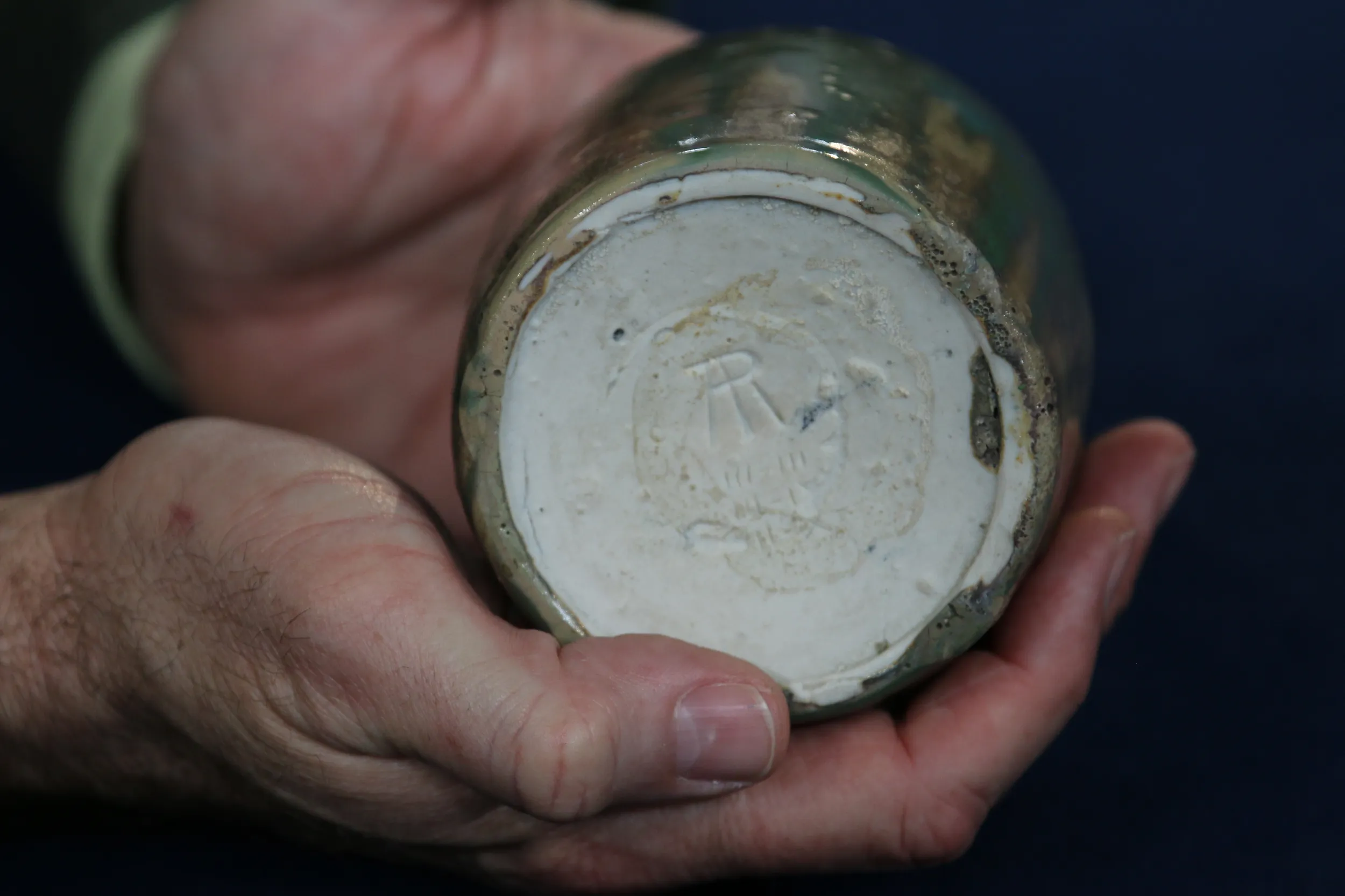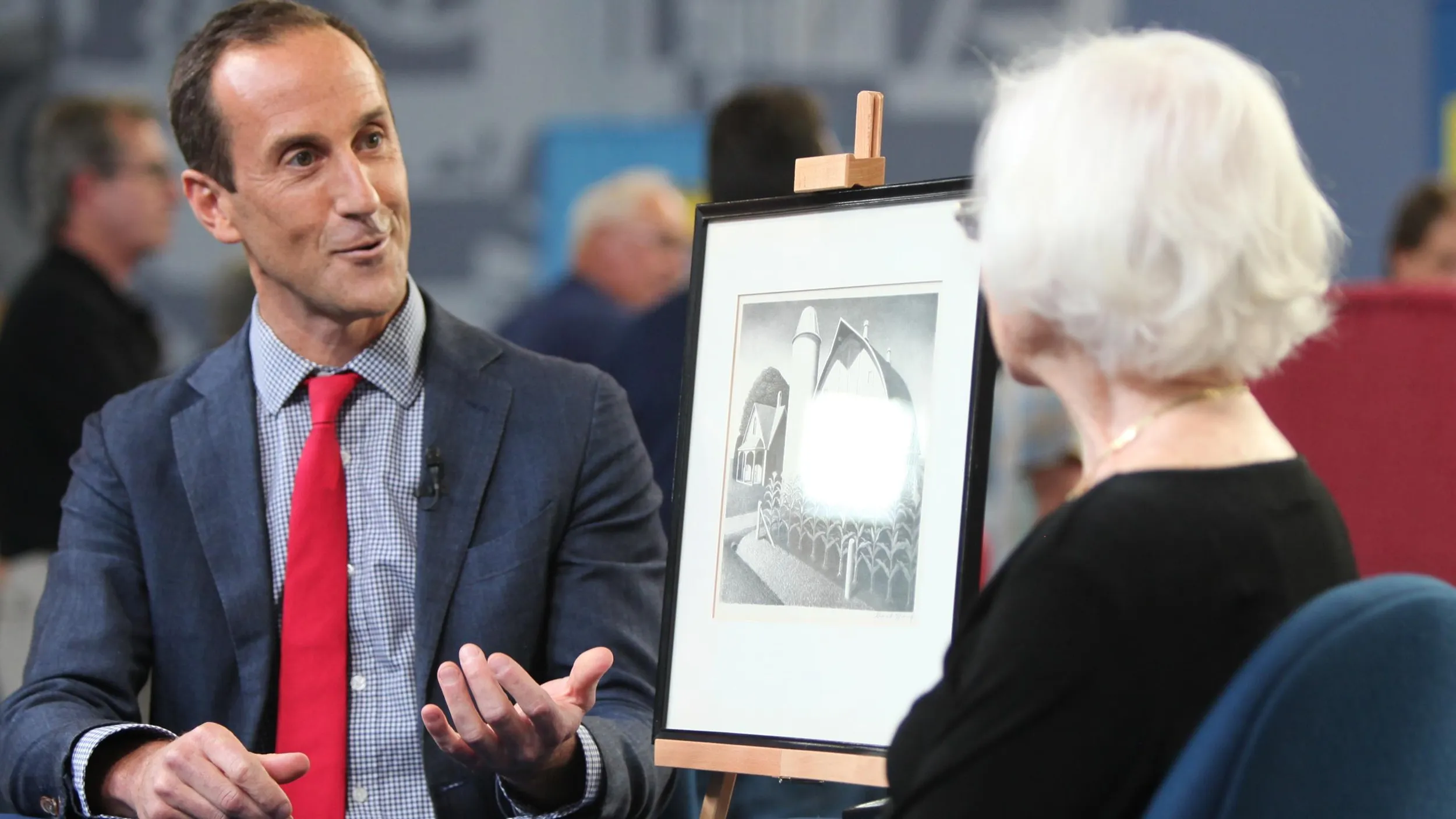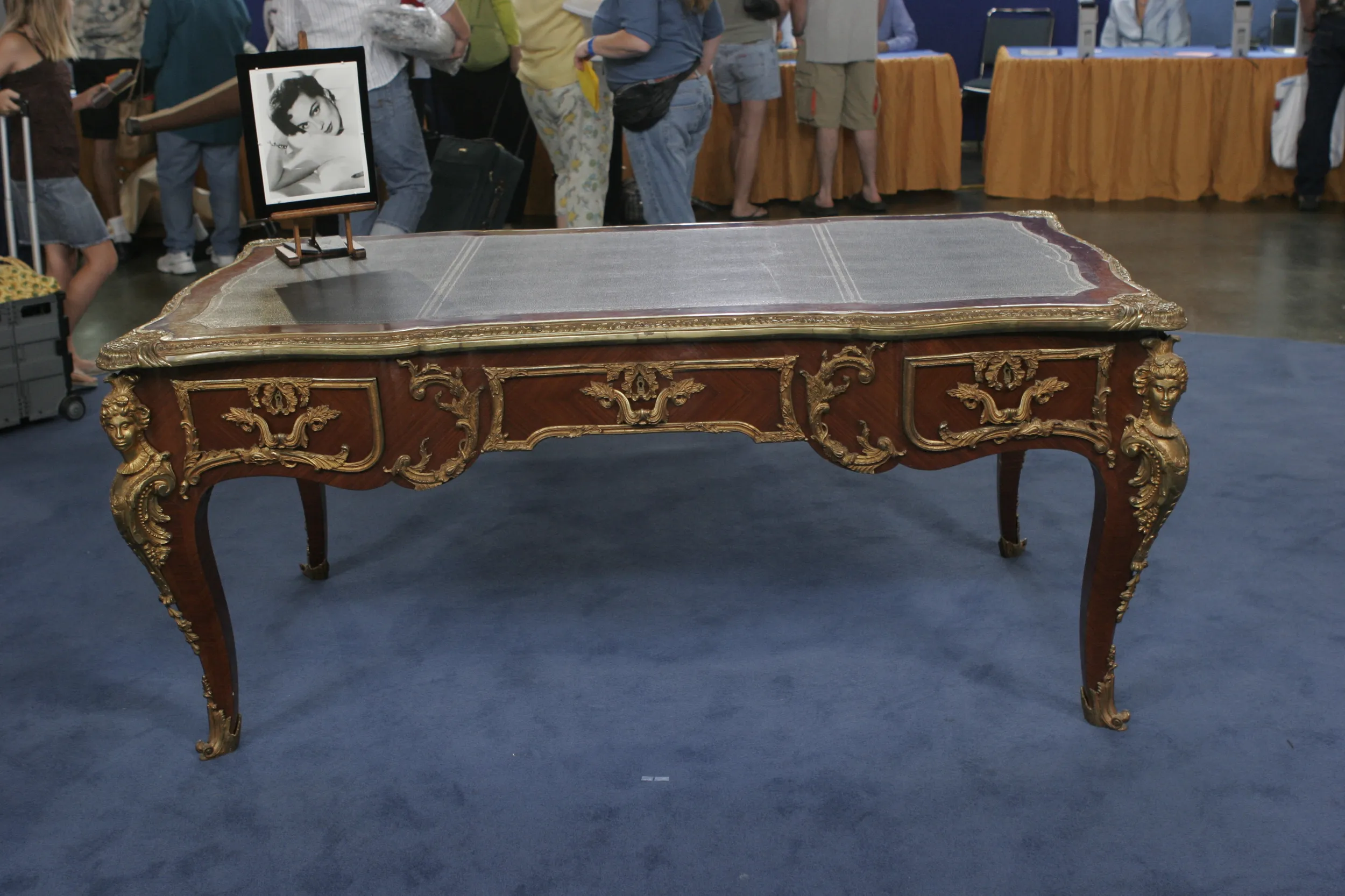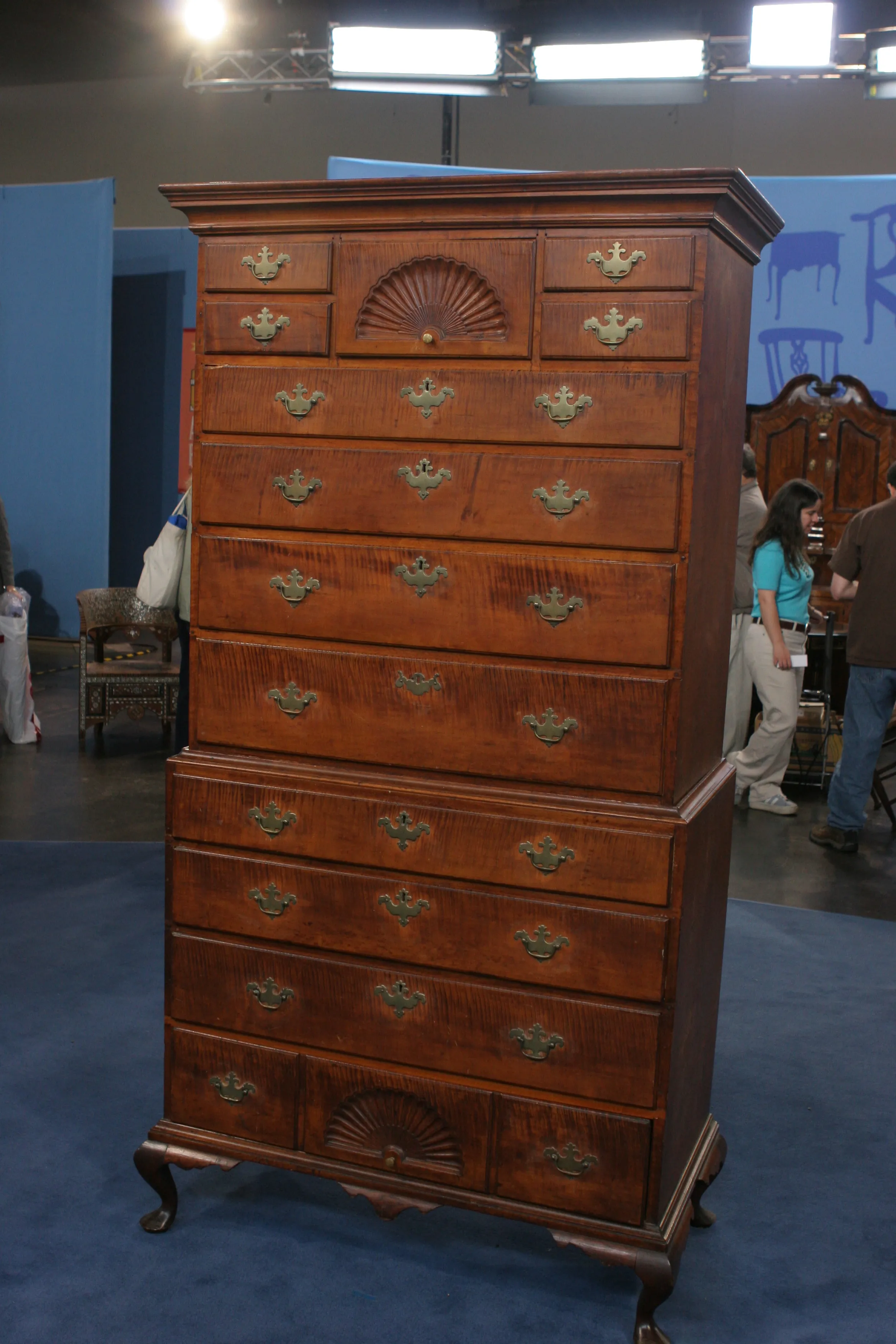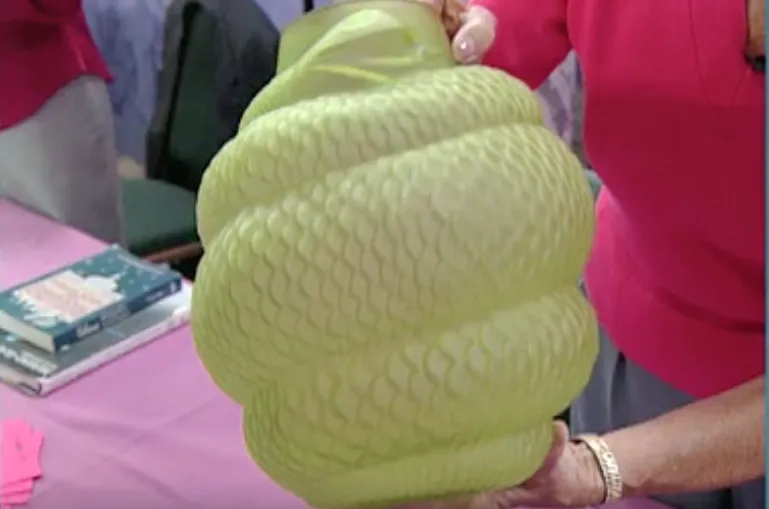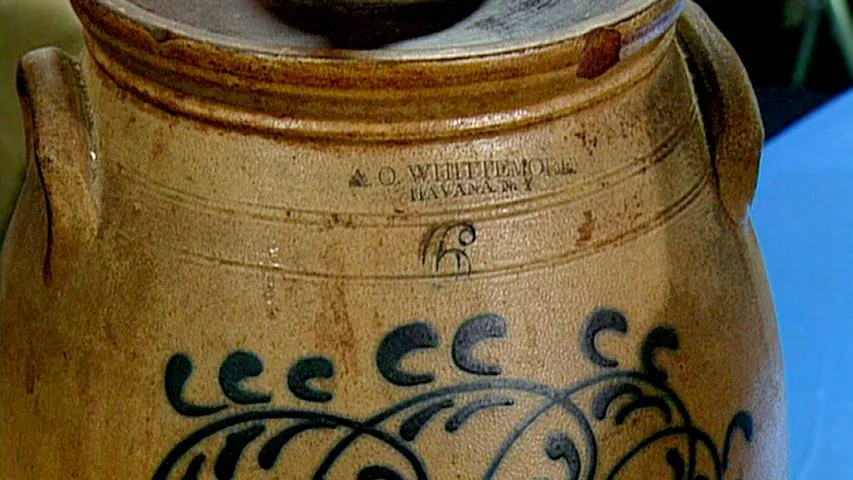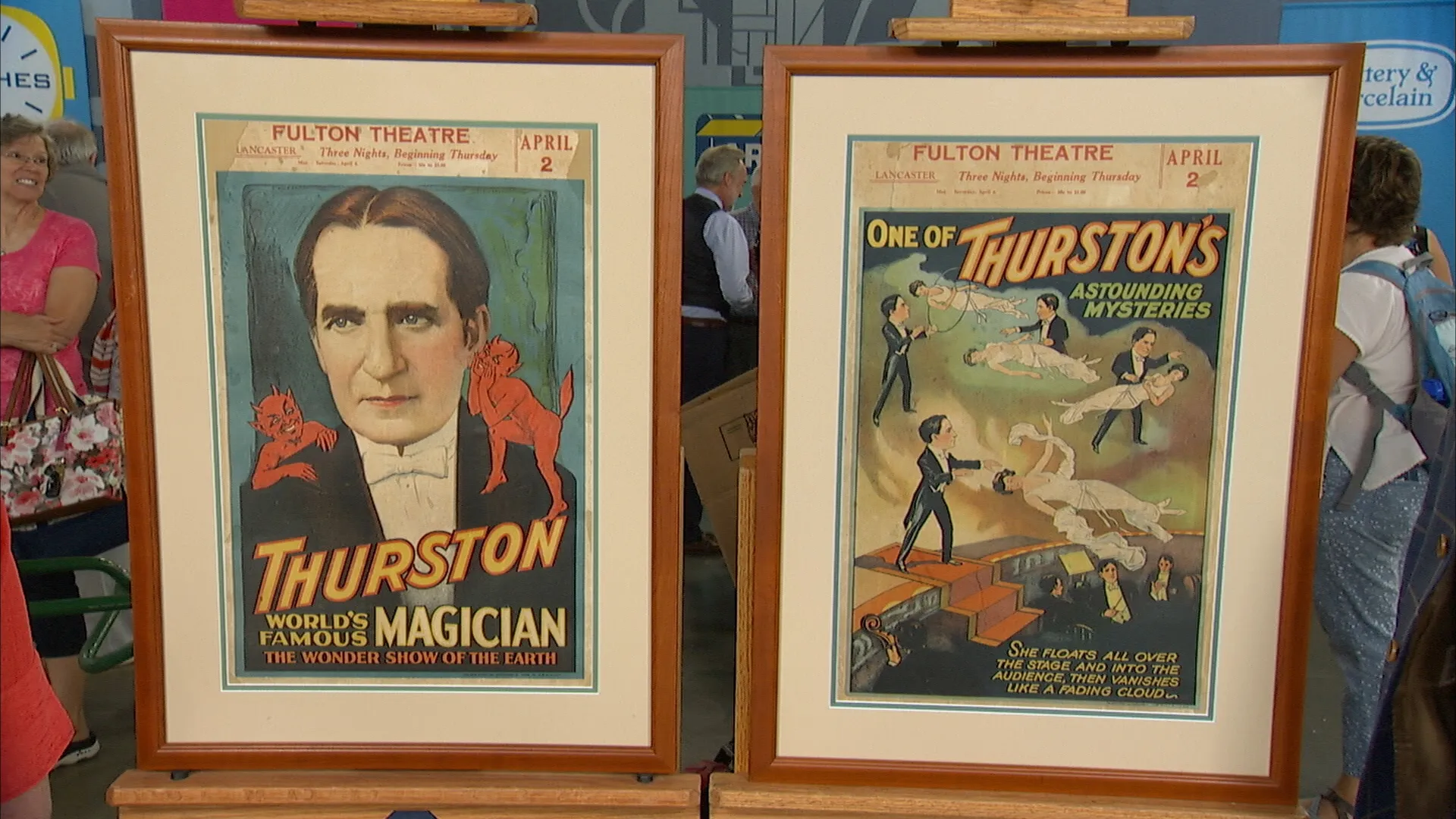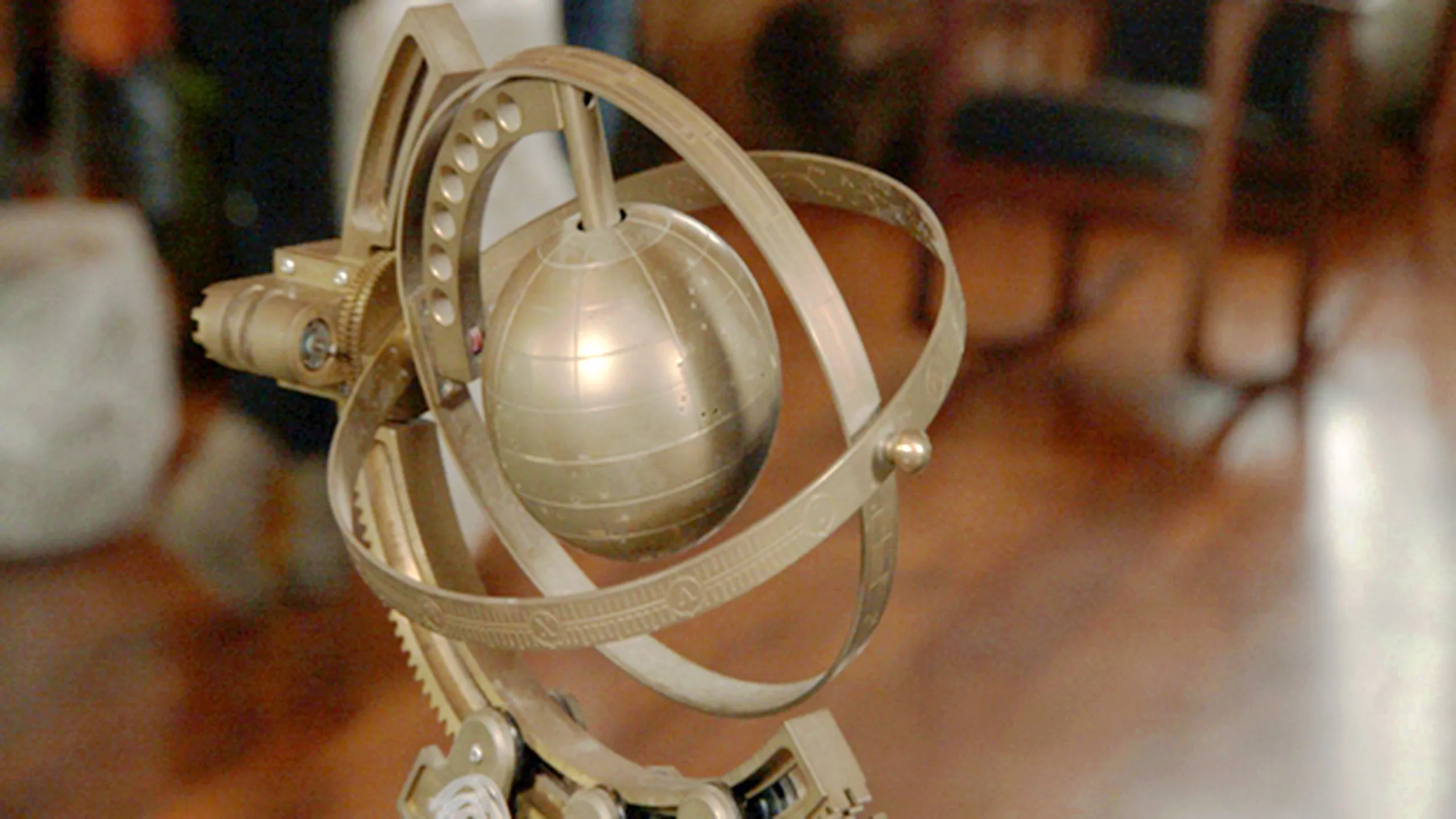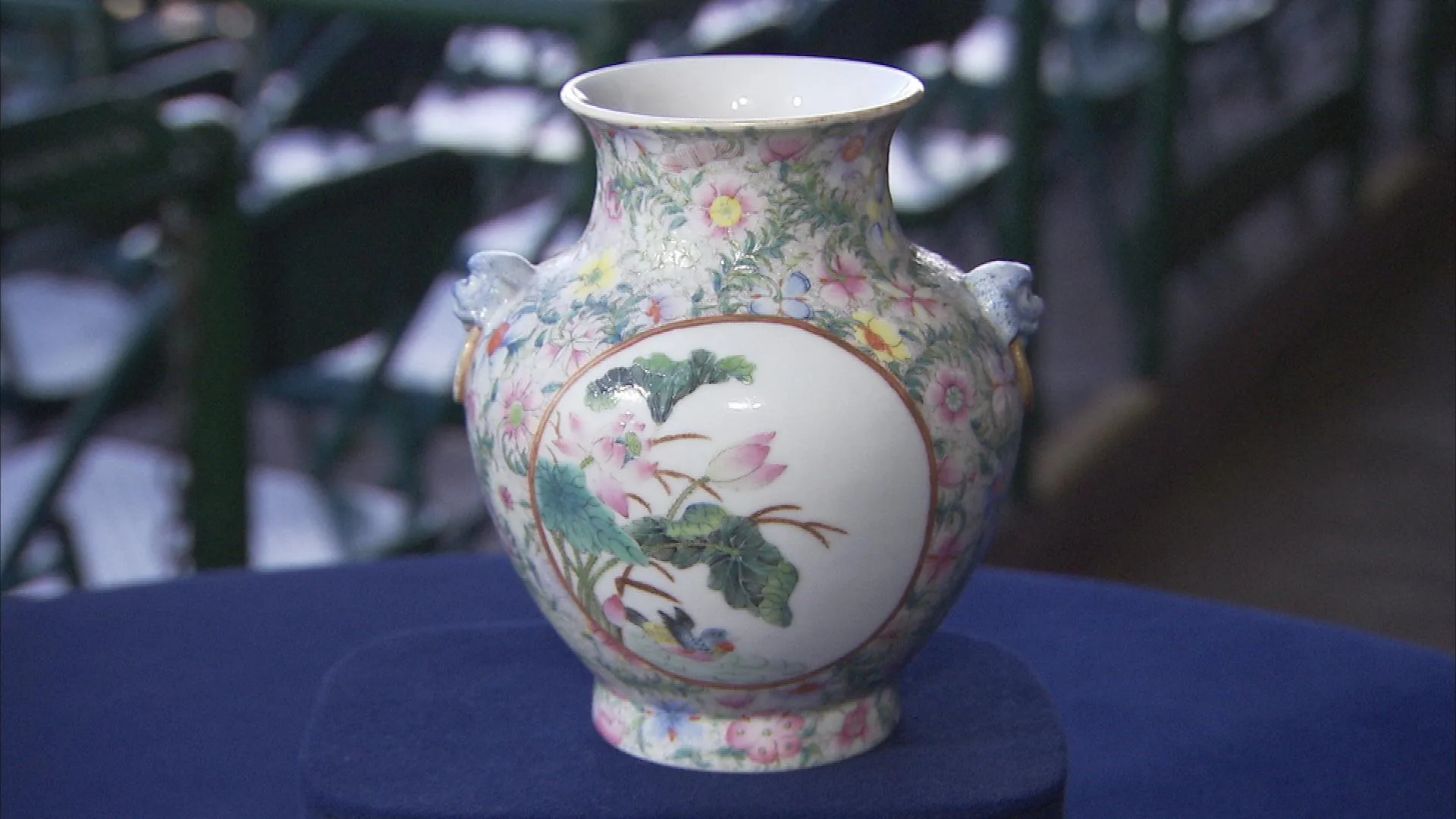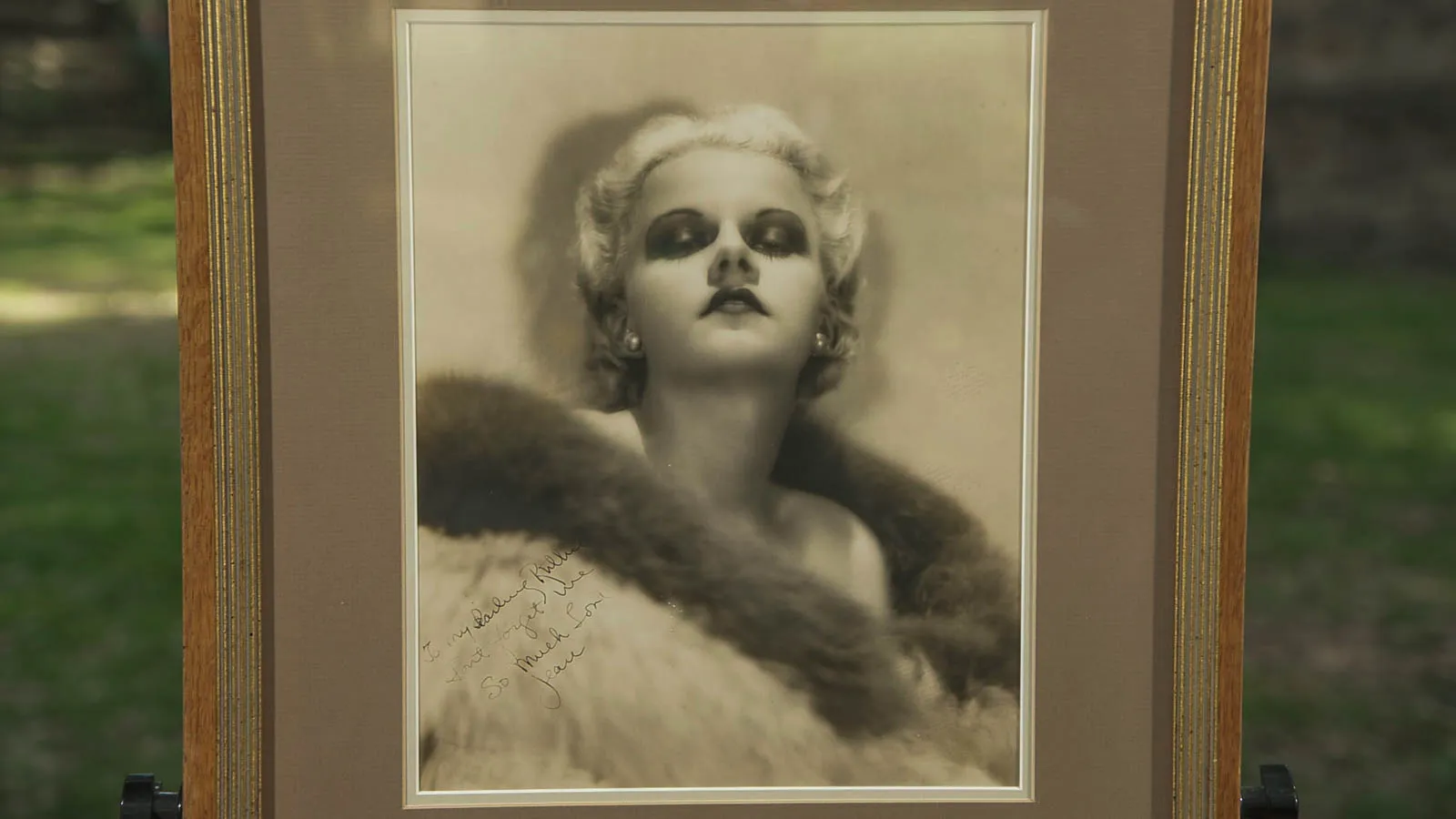GUEST: This was actually a gift when I got my first apartment in San Francisco, which was quite an achievement. I had roommates forever, but my first real apartment on my own was special, so my mom gifted this to me for housewarming. It was something I was always attracted to, different than any other knickknack in our house growing up.
APPRAISER: Well, how did your family end up with it?
GUEST: My great-great-uncle Hadi was an artist in Syracuse, New York. I don't know if he dug it out of the garbage in Syracuse or if it was gifted to him, if he was friends with the artist. Somehow, Uncle Hadi ended up with it. Uncle Hadi was very close with my grandfather.
APPRAISER: Mm-hmm.
GUEST: My grandfather gave it to my mother, and my mother gave it to me.
APPRAISER: This is a piece of pottery by Adelaide Alsop Robineau. And arguably, there are two great potters from the early 20th century in America: George Ohr, who was on one end of the spectrum…
GUEST: Mm-hmm.
APPRAISER: …crazy guy with a big moustache making 10,000 pots out of local mud; and diametrically opposed was Adelaide Robineau, working not with mud but with porcelain. A refined woman from Syracuse, a woman of social stature, who made 600 pieces, they say, in her entire career.
GUEST: Wow.
APPRAISER: If she wasn't completely happy, she would destroy a piece.
GUEST: Mm-hmm.
APPRAISER: Ohr never destroyed pieces. When his pottery burnt down in the Great Biloxi Fire, he saved the burned pots. He called them his burnt babies. So…
GUEST: Oh, you're kidding.
APPRAISER: You could not have had two personalities as different as George Ohr and Adelaide Robineau.—
GUEST: Yeah.
APPRAISER: -- yet in their way, they made the best pottery in America, at least for the first half of the 20th century.
GUEST: That's fascinating.
APPRAISER: This is a pretty good pot. It's not a great piece of Robineau, and I'll tell you why it's good and how it could be better. This piece is hand thrown. If you look on the inside, you see the… the turning rings. And also, if you notice around the top, this has hand tooling going on, a three- or four-glaze flambe. It's also very nicely signed by Adelaide Robineau. And what I also found here, there are these little tiny checkmarks. I think those are experimental marks, notes that she made on the piece so she understood what glazes she was playing around with.
GUEST: Okay.
APPRAISER: Because this was so experimental, she tended to date her pieces, and this one isn't dated. And because it's a little crude, my guess is it's an earlier example of her work…
GUEST: Mm-hmm.
APPRAISER: …so I would date this from about 1905, 1906.
GUEST: Okay. Do you think it was something that she threw in the garbage? I noticed it's crooked, I don't know if you saw. And there are a lot of bubbles and things in it.
APPRAISER: I don't think it's a second. My understanding of Robineau is when she had to second a piece, she destroyed it.
GUEST: Like shattered it.
APPRAISER: Yeah, shattered it. So that it survived means she must have thought it had something going on. It's a little uneven, it's a little lumpy, it's not a graceful form, but nevertheless, you have a piece, with some size, of porcelain, hand thrown—
GUEST: Mm-hmm.
APPRAISER: --hand carved by Adelaide Robineau in perfect original condition. Because it's not a great piece, at auction, I think the value would only be between $10,000 and $15,000. "Only."
GUEST: "Only."
APPRAISER: Which gives you an idea of how expensive Robineau can be, because, uh, there are pieces of Robineau that have brought six figures, and there are pieces, were they to come to market, would bring seven figures.
GUEST: Would that be something like her scarab vase that's in the museum, intricate carving...
APPRAISER: A masterpiece, really.
GUEST: Mm-hmm, masterpiece.
APPRAISER: And that would be certainly a seven-figure piece.

